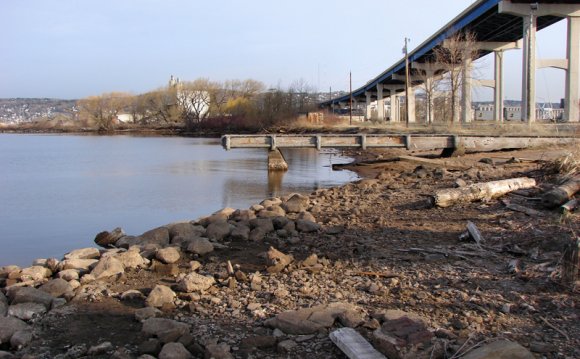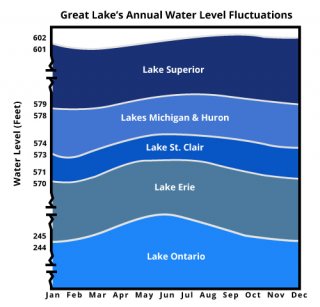
Lake Superior is about 601.8 feet (183.4 meters) above sea level plus or minus a few inches depending on the month. The water level fluctuates seasonally, reflecting the hydrologic cycle of precipitation and evaporation and the lake's overall water budget.

For at least the last 150 years, Lake Superior has lost and gained massive amounts of water (on the order of 20 cubic miles) while maintaining a remarkably even water level, varying only about four feet (1.2 m). Water levels on the other Great Lakes have fluctuated much more.
From an environmental perspective, wetlands are traditionally sensitive to water fluctuations. A water level gain or loss changes a cliff face far less than it transfigures a gently sloping shoreline. From an economic standpoint, if the water levels drop, cargo ships have to lighten their loads and sometimes vessels are necessarily excluded from harbors. Additionally, power plants at the Soo Locks might have to run at a diminished capacity.
Just in case you are wondering ... no ... the U.S. and Canadian governments are NOT manipulating Lake Superior to fill the other Great Lakes. It's true that outflow is managed by the International Lake Superior Board of Control to keep the lake near its long-term average, but humans have truly limited control over such a mighty system. Considering that it was 500 feet (150 m) higher 11, 000 years ago and possibly much, much lower than recorded history indicates, Lake Superior's water level has hovered around an impressively narrow range for several centuries.
Resources
The Miller Creek mud flats where the creek enters the Duluth-Superior Harbor between Hwy 53 and the Western Lake Superior Sanitary District.
YOU MIGHT ALSO LIKE












